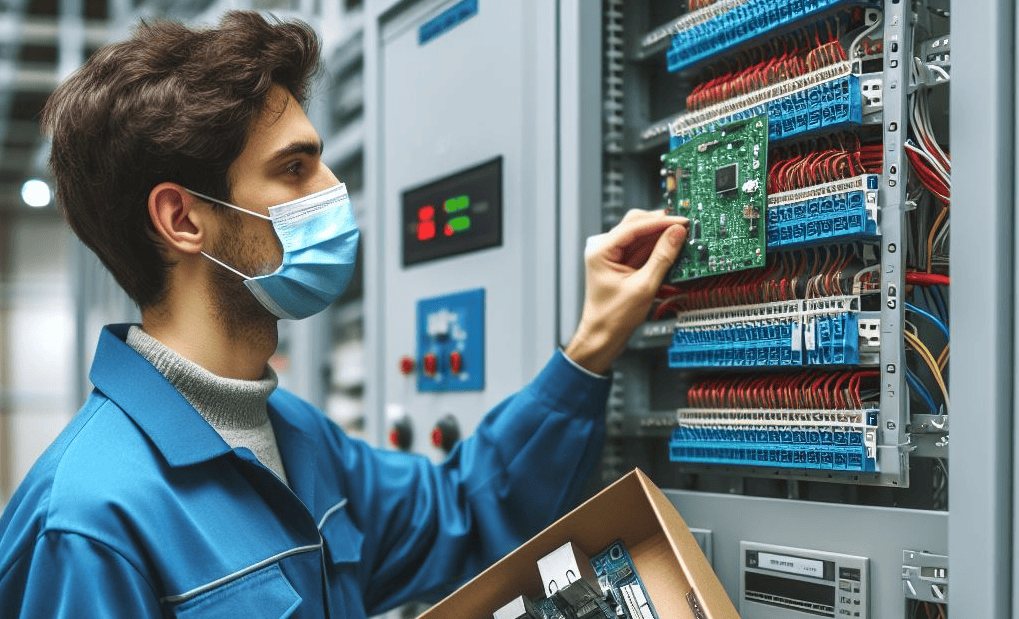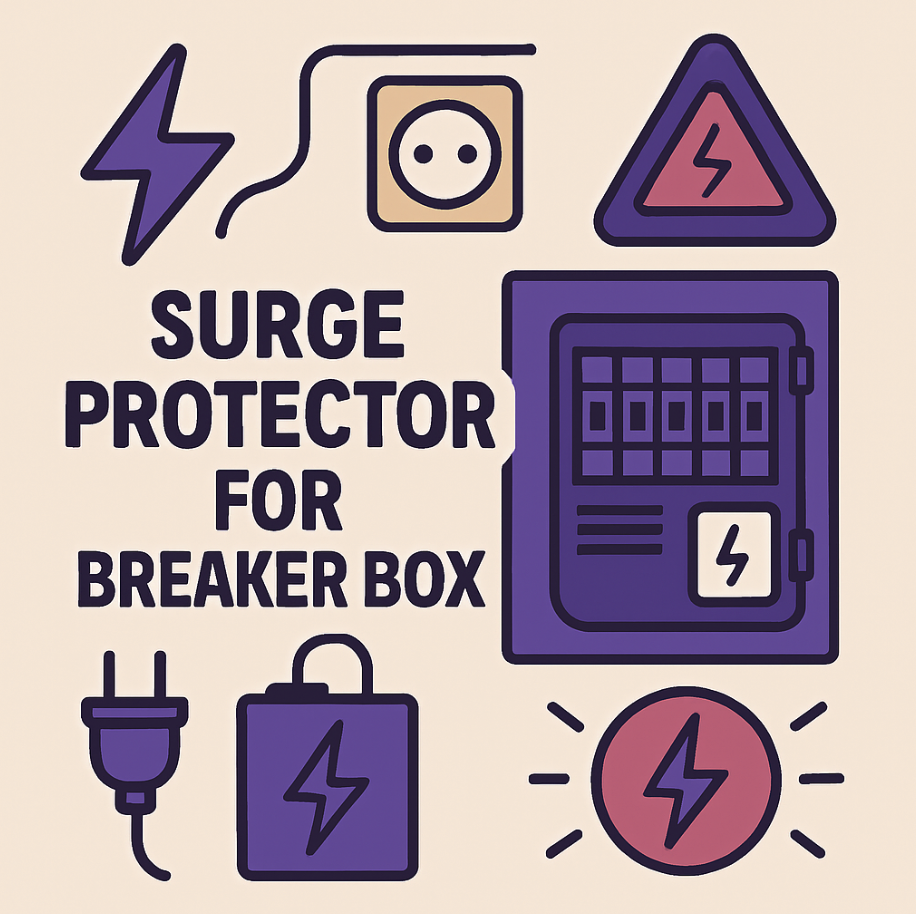Published By: Marc Edwards | Last updated on June 27, 2025 and reviewed by Editorial Team
As we increase our reliance on electronic devices, safeguarding them from potential harm has become increasingly important. Surge protectors, acting as guardian angels, protect against sudden and unexpected power surges that could otherwise inflict permanent damage on delicate electronics.
At the heart of most surge protection solutions is a relatively small yet mighty component known as the Metal Oxide Varistor, or MOV. This critical device detects and neutralizes voltage surges, ensuring that your valuable electronics remain operational and safe.
In this article, I will share whatever I know about MOVs, exploring how they function within surge protectors and why they are indispensable in defending our electronic gear against the caprices of power fluctuations.
Understanding Surge Protectors
To most homeowners and travelers, surge protectors are indispensable tools that help to safeguard their electronic devices. These devices act as shields, intercepting and mitigating power surges that could otherwise result in costly damage to electronics.
A power surge occurs when an unexpected increase in the overall electrical voltage comes through a power line. This can be caused by several factors such as lightning strikes, power outages, or significant changes in electricity use within a network.
Surge protectors work by limiting the amount of electricity that can reach the connected devices. They either block or short to ground unwanted voltages above a safe threshold. However, not all surge protectors are created equal, and their effectiveness largely depends on their features and specifications.
Here is a basic comparison table showcasing typical specifications and features you might find in surge protectors:
Feature |
Description |
Importance |
|---|---|---|
| Joule Rating | Measures the energy a surge protector can handle. | Higher numbers mean better protection. |
| Response Time | The speed at which a protector can react to a surge. | Faster times ensure quicker protection from sudden surges. |
| Underwriter’s Laboratory (UL) Rating | Certification indicating compliance with safety standards. | Look for UL 1449 certification in surge protectors for verified safety. |
When choosing a surge protector, you should (at least) consider these basic features to ensure your electronics are adequately protected. These features are especially important if you live in areas prone to frequent electrical storms or unstable power grids.
For a deeper understanding of surge protector safety standards, refer to the Underwriter’s Laboratories’ official website at UL Certification Database.
What is a Metal Oxide Varistor (MOV)?
A Metal Oxide Varistor (MOV) is an important component in the electrical engineering industry, specifically in the design of surge protectors.
This varistor is made from a metal oxide material, primarily zinc oxide combined with other metal oxides, and works as a voltage-dependent resistor. This means that its resistance changes in response to the voltage applied to it.
MOVs have very high resistance at normal voltage levels, allowing minimal electricity to pass through. However, during a voltage surge, the resistance of the MOV drops significantly, allowing it to safely absorb and dissipate the excess energy.
This change happens within nanoseconds, effectively protecting connected electronics from the surge. Here is a detailed table that outlines the key components and characteristics of an MOV:
Component |
Description |
Functionality |
|---|---|---|
| Zinc Oxide | Primary material used in MOV construction. | Provides the base semiconductor properties. |
| Other Metal Oxides | Often combined with zinc oxide (e.g., bismuth, cobalt, manganese). | Enhance the voltage-sensitive properties of the MOV. |
| Grain Boundaries | Interfaces between crystalline materials in the MOV. | Control the voltage at which the MOV will change resistance. |
The functionality of an MOV is far superior in transient conditions, where it can handle surges up to several thousand volts.
According to a report from the Institute of Electrical and Electronics Engineers (IEEE), MOVs can reduce the risk of surge-related damage by up to 80% when correctly installed in surge protectors.
Understanding the material science behind an MOV is essential for appreciating its role in surge protection. This knowledge not only aids in choosing the right surge protector but also in maintaining the safety and efficiency of electrical systems.
The Role of MOVs in Surge Protectors

Metal Oxide Varistors (MOVs) play a pivotal role in enhancing the efficacy of surge protectors. They act swiftly and efficiently to protect electronic devices from the detrimental effects of voltage spikes. The role of MOVs in surge protectors is multifaceted, involving detection, absorption, and dissipation of excessive voltage to keep connected devices safe.
How MOVs Protect Your Devices
When a voltage surge occurs, whether from a lightning strike or a fluctuation in power supply, the MOV activates by lowering its resistance. This action allows the MOV to absorb the surge and dissipate the excess electrical energy in the form of heat, thereby protecting the circuitry of the connected devices.
Here’s a detailed table illustrating the process by which MOVs operate within surge protectors:
Function |
Description |
Importance in Surge Protection |
|---|---|---|
| Detection | MOVs respond to voltage spikes exceeding safe thresholds. | Ensures immediate reaction to potential threats. |
| Absorption | Excess voltage is absorbed by the MOV, preventing device exposure. | Critical for minimizing the risk of electrical damage. |
| Dissipation | The absorbed energy is converted to heat and dissipated safely. | Prevents overheating and prolongs the life of the device. |
Statistical Support and Safety Considerations
Surge protectors equipped with MOVs have significantly reduced electronic damage rates in households and businesses, but do note that MOVs are effective at suppressing smaller, more frequent power surges
Effective MOV-based surge protection can reduce the likelihood of surge damage while safeguarding billions of dollars in consumer electronics annually.
Moreover, it is important to understand the conditions under which MOVs operate. While highly effective, they have a finite lifespan and can degrade over time, especially if exposed to frequent surges.
This underscores the need for periodic replacement and the consideration of surge protectors with indicator lights that signal the MOV’s health.
Applications of Metal Oxide Varistors
Metal oxide varistors are widely used in a variety of applications that require circuit protection and voltage suppression. These electronic components can be found in numerous industries, including:
- Telecommunications: Metal oxide varistors protect phone lines, modems, and other equipment from voltage transients and surges caused by lightning or other sources.
- Automotive: Metal oxide varistors protect various automotive systems, including ignition, lighting, and entertainment, from voltage spikes and surges.
- Power Distribution: Metal oxide varistors protect power grids, transformers, and other electrical equipment from lightning strikes and other high-voltage events.
- Consumer Electronics: Metal oxide varistors are commonly used in electronic appliances like televisions, computers, and home theater systems to protect them from power surges.
Metal oxide varistors are also often used in electronic designs, where they protect against voltage spikes and surges that can damage sensitive electronic components. This makes them an essential element in any electronic device that requires effective circuit protection and reliable operation.
Benefits of Using MOVs in Surge Protectors
Metal Oxide Varistors (MOVs) provide numerous benefits making them an essential component in surge protection technology. Their integration into surge protectors offers a highly effective means of safeguarding electronics from voltage spikes, enhancing both the safety and longevity of these devices.
Key Benefits of MOV Technology
The advantages of utilizing MOVs in surge protectors span various aspects, from their fast response times to their capacity to handle significant energy levels. Below is a table highlighting the major benefits along with descriptions and impacts:
Benefit |
Description |
Impact on Surge Protection |
|---|---|---|
| Rapid Response | MOVs can react to surges within nanoseconds. | Minimizes the duration and impact of voltage spikes on devices. |
| High Energy Absorption | Capable of handling thousands of joules of energy. | Efficiently protects against large and potentially destructive surges. |
| Cost-Effectiveness | Relatively inexpensive compared to other surge protection technologies. | Makes robust surge protection accessible to a wide audience. |
Comparison with Other Technologies
MOVs stand out when compared to alternatives like gas discharge tubes and silicon avalanche diodes, which may offer lower energy absorption or slower response times.
Technology |
Response Time |
Energy Handling |
Cost |
|---|---|---|---|
| MOVs | Nanoseconds | High (up to several thousand joules) | Relatively Low |
| Gas Discharge Tubes | Microseconds | Moderate | Medium |
| Silicon Avalanche Diodes | Nanoseconds | Low | High |
Understanding the benefits of MOVs in surge protectors enables you to make informed decisions when selecting the best protection for your electronic devices.
Their fast response times, ability to handle high energy levels and cost-effectiveness make them an invaluable component in combating electrical surges.
By incorporating MOVs, manufacturers ensure that their surge protectors offer the highest level of protection, safeguarding valuable electronic assets against unexpected electrical disturbances.
Considerations When Choosing Surge Protectors with MOVs
Selecting the right surge protector is crucial, not just for efficient performance but also for the longevity and safety of your electronic devices. When MOVs are involved, their characteristics significantly influence the overall effectiveness of the surge protector.
Here are key considerations to keep in mind when choosing surge protectors that utilize MOV technology.
Understanding MOV Specifications
When shopping for a surge protector, the specifications related to its MOV components are critical. Here are the primary MOV specs to consider:
- Joule Rating: This indicates the energy capacity of the MOV to absorb surge energy without failure. Higher joule ratings imply better protection.
- Clamping Voltage: The voltage at which the MOV begins to conduct electricity and divert it away from the protected lines. Lower clamping voltages generally offer more sensitive protection.
- Durability: MOVs degrade over time and with exposure to surges. Therefore, a surge protector with replaceable MOV modules can be a more sustainable choice.
Limitations and Warnings
While MOVs provide effective surge protection, they are not infallible. Understanding their limitations is key to ensuring they perform as expected:
- Thermal Protection: MOVs can overheat if a surge protector lacks adequate thermal fusing, which can pose fire risks. Always check that your surge protector is rated for fire safety.
- Certifications: Look for certifications from recognized safety organizations, such as Underwriters Laboratories (UL), which signify compliance with safety standards.
Whether for home use, business applications, or high-end electronic setups, investing in effective surge protection is a crucial strategy for mitigating electrical risks.








